Creating and Deleting Organizational Units

Server Academy Members Only
Sorry, this lesson is only available to Server Academy members. Create a free account now to get instant access to this and more free courses. Click the Sign Up Free button below to get access to our free courses now, or sign in if you have an account.
Instructions
Q&A (0)
Notes (0)
Resources (0)

Saving Progress...
Resources
There are no resources for this lesson.
Notes can be saved and accessed anywhere in the course. They also double as bookmarks so you can quickly review important lesson material.
In this lesson, I'll be showing you how to create Organizational Units.
Now, an Organizational Unit are these so-called folders that you see up here that contain Active Directory Objects.
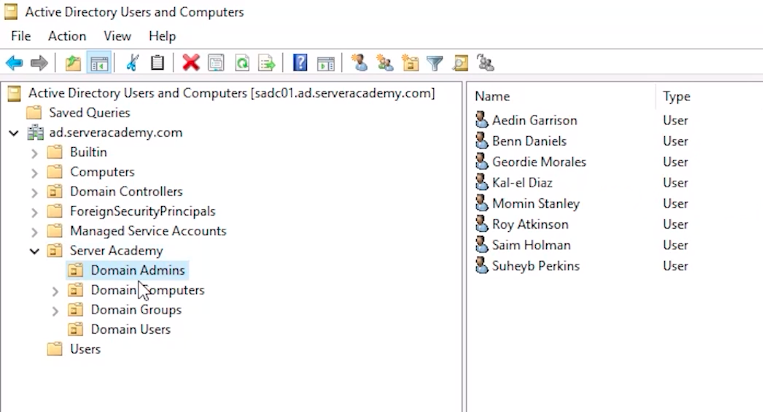
Now, it gets kind of complicated because not all of these are OUs like Bultin, Computers, and ForeignSecurityPrincipals. These are not necessarily Organizational Units but rather Containers.
This gets into the out of the scope of this fundamentals course. We have all this detailed out in the Active Directory Course. If you are interested in that, please refer to the Active Directory in the Windows Server Course. We are getting into a lot more detail there, but just for now know that an OU has a different icon, so you can identify the OUs because you will see the icon slightly different here, This is an OU and these are rather Containers. Also, Organizational Units can receive Group Policy Objects directly attached to them.
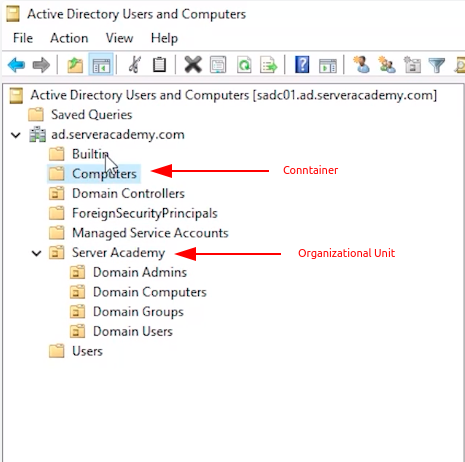
Now, that probably went right over your head, again, it kind of goes beyond the scope of what I can explain just in this course. We do explain it inside of the Group Policy and the Active Directory courses.
Now, what I am going to do is create an Organizational Unit under Server Academy and I will just right-click the OU, and select New > Organizational Unit.
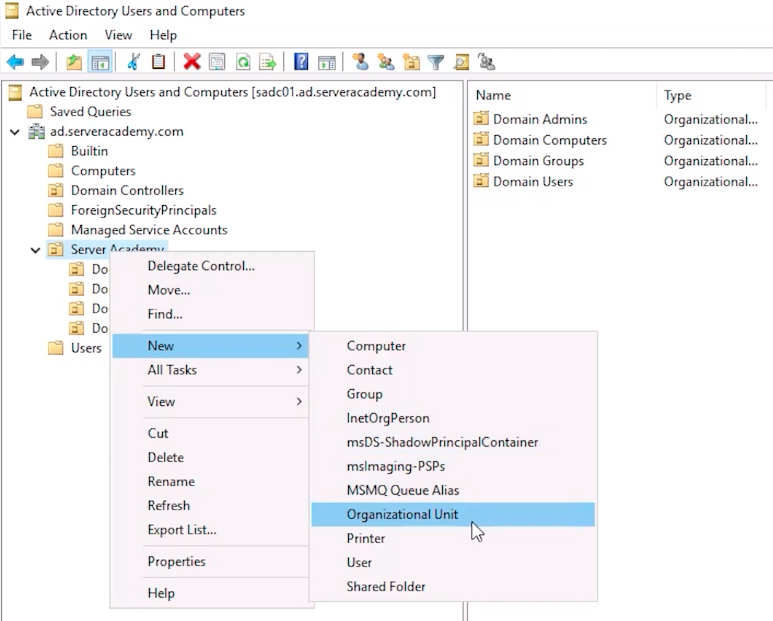
Now, we are going to call this: Disabled Users. And, we are going to leave this check box here that says Protect container from accidental deletion. You'll know it says Container here. An Organizational Unit and Container are used interchangeably but there are different, ok? This is a Microsoft thing, I am sorry it is that way, but that's the way that it is.
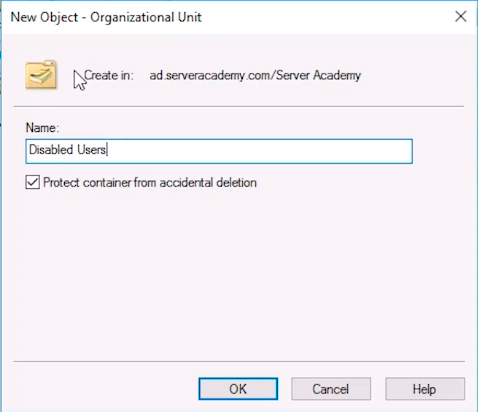
So, now we have this Organizational Unit here. If I try to Delete this OU, we are going to get an error message that says You do not have sufficient privileges, or this object is protected from accidental deletion. You remember when we checked that check box it was enabled.
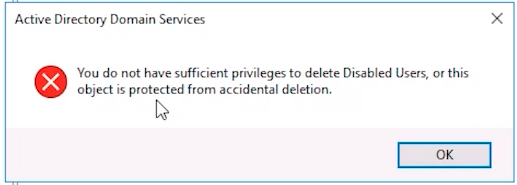
Now, if I really wanted to delete this OU what I can do is hit View and turn on Advanced Features.
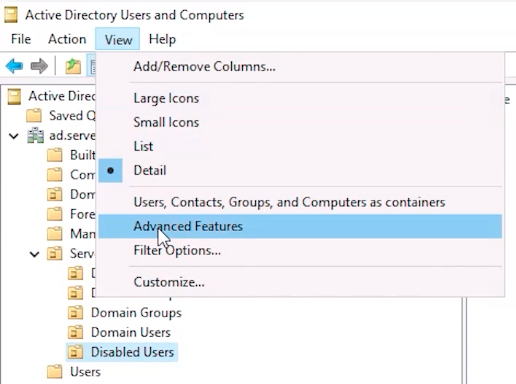
And, then I can re-navigate over here to Disabled Users, right-click and choose Properties and I am going to go under Object and uncheck this Protect this object from accidental deletion. I'll hit Apply.
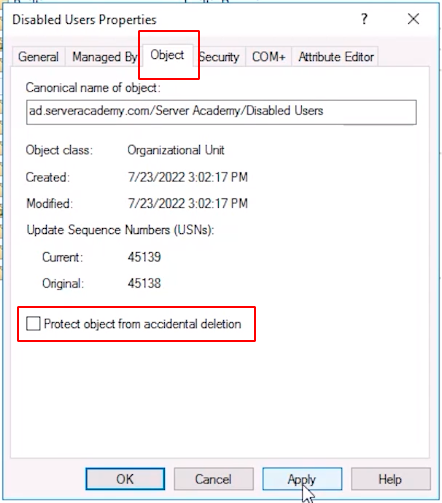
And now if I right-click on this OU I can click Delete and I am able to delete the Organizational unit. I am going to turn off Advanced Features and I am just going to recreate that Organizational unit because we want to use this Disabled Users OU in a future lecture. So, I am naming it Disabled Users and I'll click OK.
Alright, so that's all we have to do in this lecture. Great job getting through this one, and I will see you on the next one.

Server Academy Members Only
Want to access this lesson? Just sign up for a free Server Academy account and you'll be on your way. Already have an account? Click the Sign Up Free button to get started..



Everything is new to me. Simple explanation. So far, I’ve been really enjoying it.
I know every organization is different but is there a best practice layout or simple template for creating these OUs?
Hi Benjamin Potter
Benjamin Potter
The approach most commonly used is the department model where you mirror your org structure in different departmental OUs. This depends on the organization and how big it is. Check the following link for a detailed explanation:
https://cloudinfrastructureservices.co.uk/active-directory-ou-ad-organizational-unit-best-practices/
Ricardo
😀